Above image: James Bond had a “Signature Camera Gun” in the film License to Kill – but real spies had less high-tech weapons. Let’s take a look at some real-world spy guns.
Movie spies like James Bond didn’t just get the girl, they often were provided with some truly innovative firearms. Throughout the Cold War – and even after – Bond was issued with such interesting weapons as a wrist dart gun, a gyrojet rocket gun in a cigarette, a fountain pen gun, a ski pole gun, and notably a camera sniper rifle. Of course, the most ingenious weapon in the Bond films was the Golden Gun but that was carried by the villain.
In the real world, spies don’t generally carry gizmos and gadgets, and real “tradecraft” is about gathering intelligence. That said throughout the 20th century there were some actual spy guns that various intelligence agencies issued – generally with less than the desired effect.
Up Your Sleeve Spy Guns
Developed during World War II by Station IX of the British Special Operations Executive (SOE), the Sleeve Gun was basically a Welrod pistol without the pistol grip. These were produced in both .32 ACP and 9x19mm, but the effectiveness of the weapon is questionable. It was difficult to aim and had a range of just nine feet.
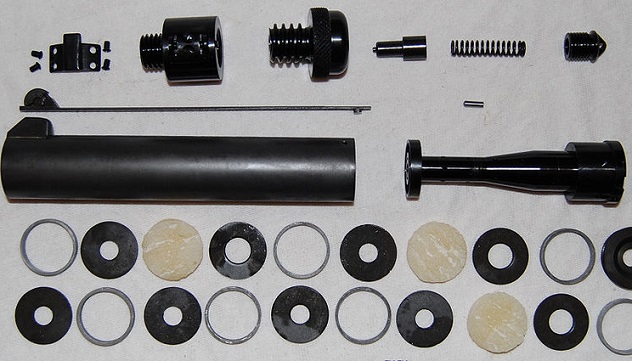
The Sleeve Gun was basically a Welrod pistol without the pistol grip and had a limited range at 9 feet.
Mightier Than the Sword Spy Guns
Pen guns were developed in the early 20th century. However, it wasn’t until the Second World War that the OSS, the precursor to the CIA, developed the effective “Stinger”. It was a pen that fired a small .22 caliber round. It was a single-shot weapon (like many on this list) that was cumbersome to cock and fire. OSS training manuals even recommended it be used from a concealed location. However, the biggest benefit of this weapon was that it could be hidden in plain sight.
More recently modern Stingers have been produced. They could be reloaded and more importantly folded into the shape of a handgun. The ATF has classified as these as handguns, meaning these are easier to own than a true pen gun.

Various pen guns that were similar to the Stinger. (Collection of the Museum of the History in Donetsk, Ukraine).
Kiss of Death
One of the most infamous of the Cold War guns was the KGB-issued “lipstick” gun, which appeared to be an ordinary tube of lipstick that secretly contained a single 4.5mm bullet. The weapon was operated by twisting the tube.
It wasn’t very accurate and there are no known reports of anyone actually be “taken out” by this weapon, but as far as spy weapons go this one seems pretty innovative.
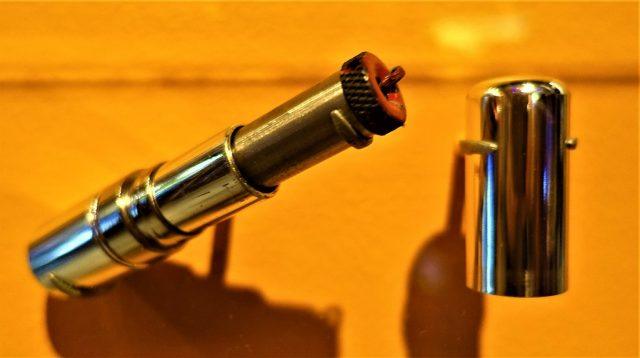
Truly a kiss of death – this tube could fire a 4.5mm bullet (Public Domain).
Foul Weather Weapon
For a spy weapon to be effective it needs to not stand out. Therefore, the Umbrella Dart Gun was ideal for use in London, a city known for its rain. It was developed by the Bulgarian Secret Service with some help from the KGB during the 1970s not to keep its operatives dry (which it probably did), but to make a point – a very sharp and deadly point.
It was also reportedly developed with a target in mind, Bulgarian dissident writer and journalist Georgi Markov. A member of the Bulgarian secret police apparently fired the weapon at Markov as the writer walked across Waterloo Bridge in London. Markov felt a sharp prick on his leg and looked behind him to see a man picking up an umbrella. He arrived for work, but soon fell ill and died four days later. The cause of death was poisoning from a ricin-filled pellet.
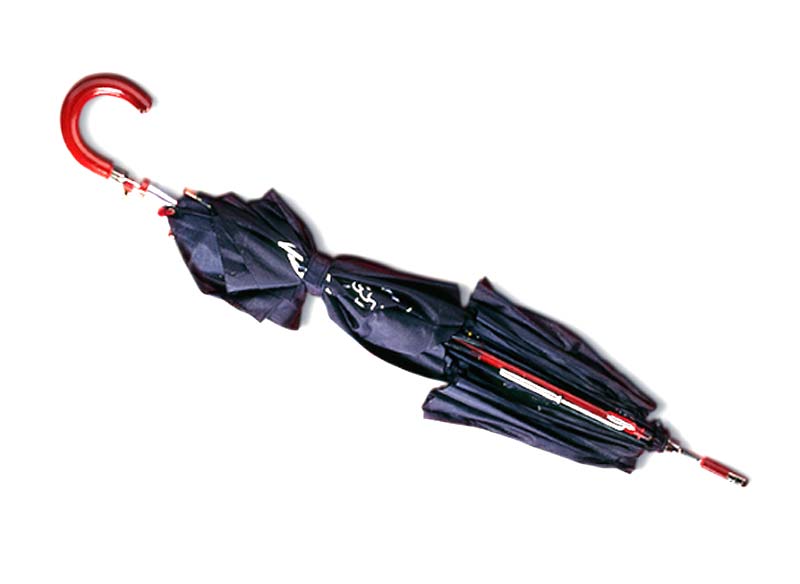
A replica of the “Bulgarian umbrella” used to kill Markov in the International Spy Museum in Washington, D.C.
The idea of turning an umbrella into a weapon isn’t entirely new either. During the Victorian Era gentlemen in London – fearing street crime – and those Englishmen in the colonies were known to carry “sword canes” and “sword umbrellas”. How effective these weapons were is a matter of debate. It is unclear if any British agents resorted to carrying such weapons.
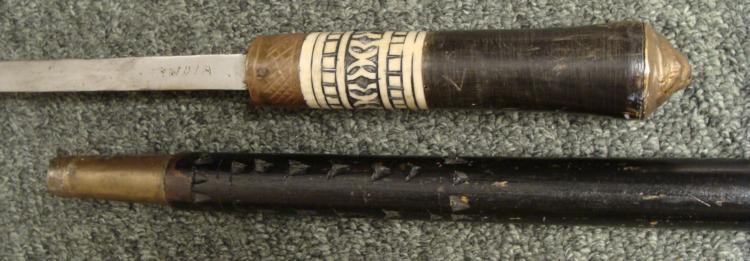
A 19th-century sword cane – something more likely to be carried by a gentleman than a spy or secret agent.
A KGB agent was arrested in 1986 with a rather sophisticated cane gun, and it was entered into evidence against him. But again the effectiveness of a single-shot weapon without sights suggests it was truly a weapon of last resort.
Accessorizing? Check these deals out!
⚠️ Some hyperlinks in this article may contain affiliate links. If you use them to make a purchase, we will receive a small commission at no additional cost to you. It’s just one way to Back the Bang. #backthebang
Spy Guns Fit Like a Glove
It wasn’t just the Communists’ intelligence agencies that were developing spy weapons during World War II and the Cold War. The Office of Naval Intelligence (ONI) developed a Glove Pistol, which wasn’t a long-range weapon, to say the least. In fact, to fire the glove the wearer had to make physical contact with the wearer. The plunger was pushed against the target’s body, which would fire point-blank.
The benefit of such a weapon is that both of the user’s hands would be free and the target wouldn’t even know the attacker was armed. Of course, if you can get that close why not use a knife or other weapon?
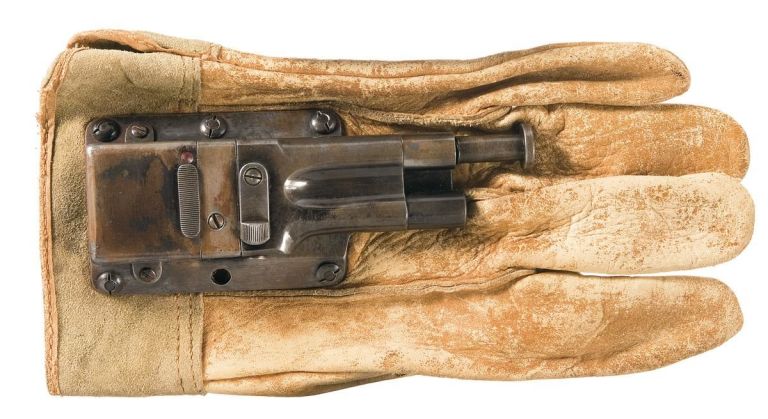
Spy Guns: If the glove fits you can use it to take out the enemy. (Collection of Rock Island Arsenal).
The Glove Guns were reportedly designed for the U.S. Navy and made by RF Sedgley during World War II. The gloves were fitted with a .38 S&W barrel mounted alongside the plunger and could fire just the single round. Unlike many of the other weapons on this list, which were one-off items, according to the U.S. military, about 50 to 200 of these were made and more importantly issued.
The guns have become a part of pop culture over the years. They appeared in the 2009 film Inglourious Basterds, written and directed by Quentin Tarantino.
Faint of Heart Spy Guns
A Senate hearing in the 1970s revealed that the CIA had developed a dart gun capable of causing a heart attack. It wasn’t fired from a regular gun. It was designed to penetrate clothing yet leave skin unmarked except for a small red bump that could resemble an insect bite.
A frozen toxic dart would then trigger a heart attack. For that reason, this weapon has been dubbed the Heart Attack Gun. The idea was that no one would know the target was even shot. It would look like the victim died of natural causes. It isn’t known if the Heart Attack Gun was ever used, but a search of Communist-era officials and agents could reveal who died suddenly of a heart attack.

Senator Frank Church holding the “Heart Attack Gun” during a 1975 Senate hearing, which detailed the existence of the weapon (Public Domain).
Read more of Peter Suciu’s articles on Breach Bang Clear.

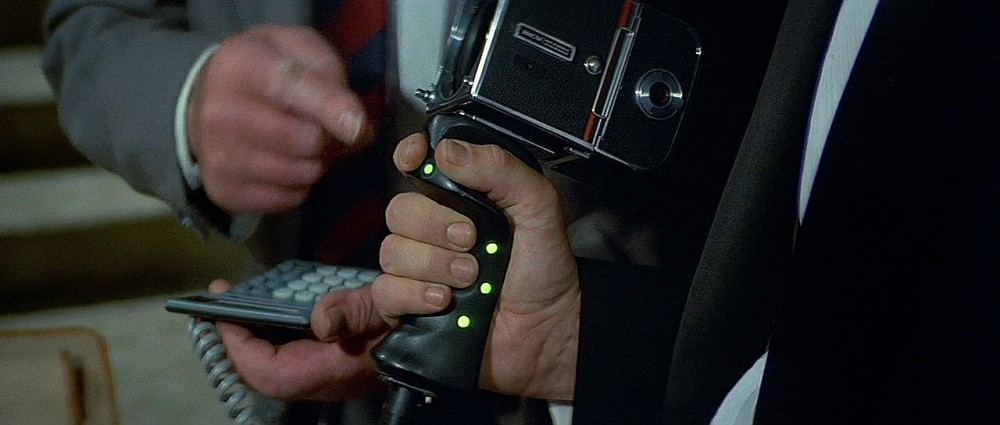
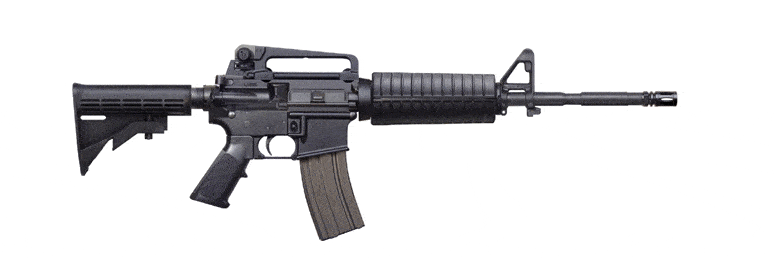
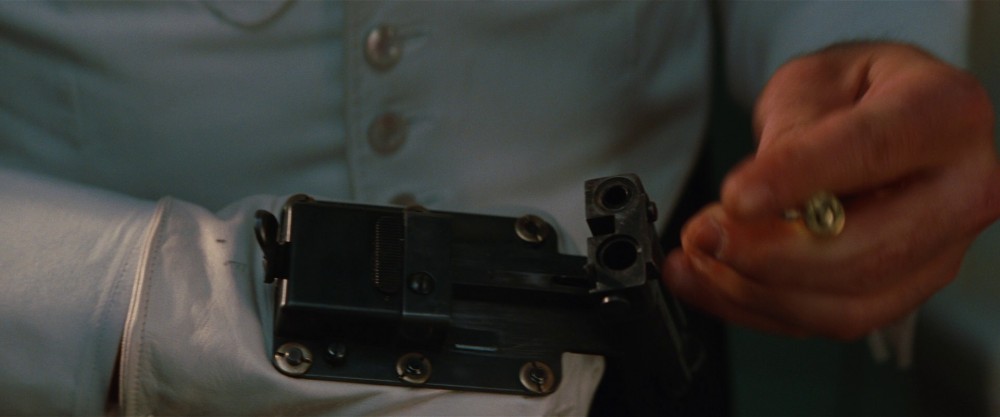


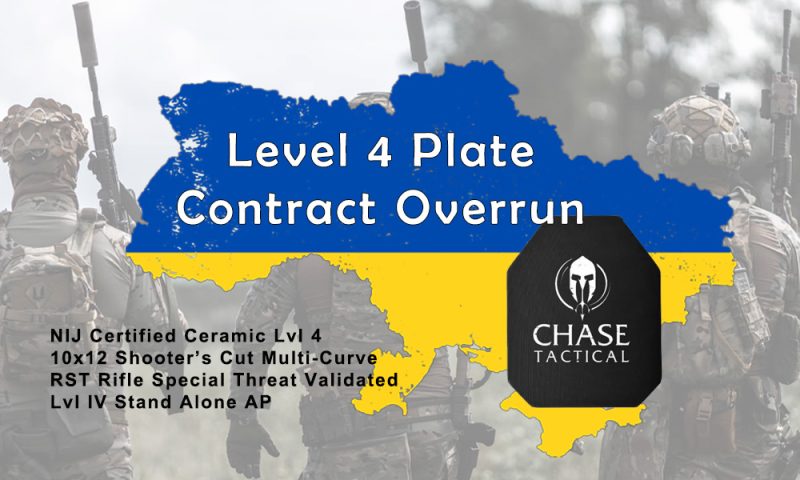




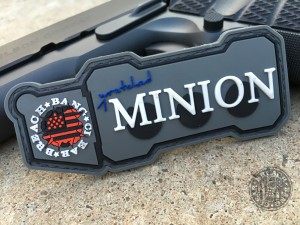
I’d like my email to be added to your mailing list. Thank you!